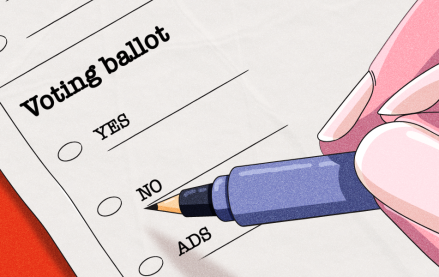In the year between Media Summit New York 2010 and Media Summit New York 2011, Apple introduced the iPad, sold 10 million of the devices and laid the groundwork for companies to create content that would drive demand for the device. But at this year’s gathering, coming as it does on the eve of the release of iPad 2.0, industry impatience at the lack of a clear business model on which to base content creation is palpable.
The market for mobile content, and, specifically the market for iPad content ,has developed so quickly that a cohesive strategy for making money has not yet been developed. But consumers eager to access the device’s potential through apps and the mobile web are consuming content voraciously. Even though the hardware has taken hold and more content is becoming available everyday, money available for the digital advertising and marketing that might support new content lags well behind money spent on declining and fragmented broadcast media. Shiven Ramji, vp mobile media and advertiser products for the Nielsen Company, says that the issue is simple. “Is there enough money to support this content in a meaningful way?”

According to Matt Jones, vp mobile strategy and operations for Gannett Digital Network, in the nine months since the company launched its USA Today for iPad, the app has been downloaded 1.6 million times. Jones says newspaper has a circulation of 1.8 million. That means that in less than one year, the iPad app has amassed numbers that bring it very close to parity with the print edition. But Jones says that the app does not generate even a fraction of the revenue that the print edition does.
Jones says Gannett has sells advertising on USA Today for the iPad using a “clicks and impressions” model, which he refers to as “the coin of the realm in the digital world.” Although he acknowledges that it is not ideal, he is optimistic about the direction in which he sees the business developing. He says that Apple’s introduction of iAds was a “big platform validator,” and that Gannett is committed to the format.
Content, even content that is not paid for, may be king. But panelists at the day’s sessions largely agree that convenience is queen. Apple has predicated its iTunes Store business on the idea that consumers are willing to pay for content as long as the process is quick and easy. But Frank Radice, expert in residence at marketing agency Definition 6, argues that a model already exists for removing the consumer from the process of monetizing content altogether.
He says that any location or venue that plays music as a part of its normal business pays a fee to BMI or ASCAP, the companies that pay songwriters royalties. “Everybody puts money into the pot,” he says. “The money comes from a clearing house. Create a clearinghouse for digital content so people end up getting paid for content. I don’t understand why the entire community is gathering around something like that.”
Although digital content has not had the benefit of the boon years that both the music business and the home video business enjoyed, the specter of those businesses in decline hung over many of the panel discussions.
Saul Berman, global strategy and change leader for IBM, believes that, although people are willing to pay for content they don’t make a distinction between paying content creators and paying content distributors. “Take music,” he says. “Music today is worth more than it ever was. It’s just that the money doesn’t go to the music companies. The value has shifted along the value chain. Now the music is 99 cents if you want to pay and free if you don’t. But the player is $200 or $300.”
Money is not the only fly in the mobile ointment. The session’s keynote speaker, David Carey, president of Hearst Magazines says that for his company, the 70/30 split that Apple is offering to publishers who want to sell subscriptions in the iTunes store is not the sticking point. Carey says that the biggest stumbling block is Apple’s unwillingness to share data about who is buying Hearst products. “The big questions revolve around data,” says Carey. “Who owns this customer?”
While it is true that many content providers are struggling to find ways to make money creating iPad-specific content, Carey reminded his audience that the business of creating content for the iPad and developing ways to charge for that content is in its infancy. “Just keep in mind,” he said. “You may have things in your refrigerator that are older than this entire business.”
https://digiday.com/?p=912
 According to Matt Jones, vp mobile strategy and operations for Gannett Digital Network, in the nine months since the company launched its USA Today for iPad, the app has been downloaded 1.6 million times. Jones says newspaper has a circulation of 1.8 million. That means that in less than one year, the iPad app has amassed numbers that bring it very close to parity with the print edition. But Jones says that the app does not generate even a fraction of the revenue that the print edition does.
According to Matt Jones, vp mobile strategy and operations for Gannett Digital Network, in the nine months since the company launched its USA Today for iPad, the app has been downloaded 1.6 million times. Jones says newspaper has a circulation of 1.8 million. That means that in less than one year, the iPad app has amassed numbers that bring it very close to parity with the print edition. But Jones says that the app does not generate even a fraction of the revenue that the print edition does.







